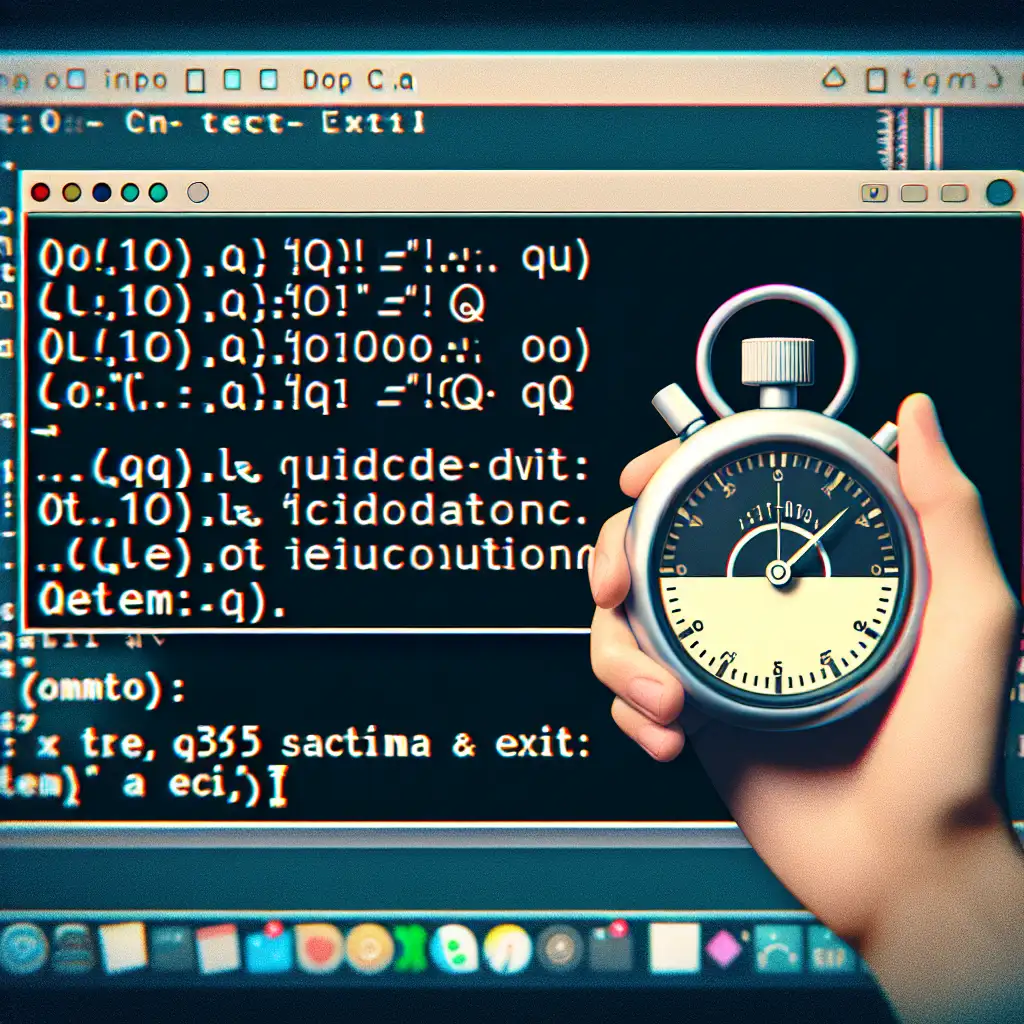Quitting Vim efficiently is non-trivial for many engineers—especially under time pressure, or worse, during a critical deploy when a misstep can discard work or block a CI pipeline. The modal design of Vim (normal, insert, visual, command-line) complicates matters, and the learning curve leaves many reaching for Stack Overflow after seeing:
Type :quit<Enter> to exit Vim
or, more commonly:
E37: No write since last change (add ! to override)
Below: practical command sequences, minimum friction, zero data loss. (vim 8.2+ assumed; differences in Neovim behavior called out as needed.)
Exiting Vim: Mode and Context Matter
Step 1: Check Your Mode
Typical misstep: attempting to exit from insert mode. Press Esc to ensure Normal mode; visually, the -- INSERT -- line disappears.
Method 1 — Save and Quit:
Most reliable for writing changed buffers, especially when working within git commit hooks or editing config files directly on a remote host:
:wq
:w— write (save).:q— quit.
Equivalent shortcut:
:x
:x and :wq behave identically unless you use Vim's optional encryption layer.
Method 2 — Fast Save and Exit:
Frequent workflow: edited just enough, want out—no command-line entry needed. From Normal mode:
- Press
Shift+Ztwice:ZZ.
This shortcut writes the file only if modified (reduces unnecessary disk writes in high-frequency edits on large files).
Method 3 — Abort and Discard Changes:
Need to trash all changes since last write? (e.g., after pasting YAML with problematic indentation):
:q!
Vim exits immediately, discarding unsaved changes and without triggering write hooks. Note for multi-buffer sessions: this applies only to the current buffer.
Method 4 — Save, Don’t Quit:
Useful when running integration tests or refactoring: persist intermediate work without closing buffer.
:w
This stores the contents but leaves you in-place; check for output such as:
"settings.yaml" 12L, 256B written
(Where 12L is lines, 256B is bytes.)
Method 5 — All Buffers, One Command:
Running :e * or using tabs/splits often results in multiple open files. To atomically write and exit all in Vim >=8:
:wqall
or
:xa
Both traverse open buffers, saving and closing. On failure (e.g., permissions), Vim halts with an explicit error, preventing partial state.
Common Pitfalls (and Output)
- Quitting from Insert mode:
E488: Trailing characters
Always exit to Normal mode first. - Read-only filesystems/permissions:
UseE212: Can't open file for writing:w !sudo tee %for privileged saves (works only when launched from a sudo-capable shell). - Ignored file locking (multi-session edits):
Investigate before overriding if concurrent editing is detected.E325: ATTENTION Found a swap file by the name ".example.txt.swp"
Summary Table
| Command | Action | Scope |
|---|---|---|
:wq, :x, ZZ | Save (if needed) & quit | Current buffer |
:q! | Quit, discard changes | Current buffer |
:w | Write, stay in Vim | Current buffer |
:wqall, :xa | Save all, quit all buffers | All open files/blobs |
Side Note: Streamline with .vimrc
Veterans map muscle-memory keys:
" Save with Ctrl+S (insert & normal mode)
inoremap <C-s> <Esc>:w<CR>a
nnoremap <C-s> :w<CR>
" Confirm on :q if unsaved changes
set confirm
With set confirm, Vim surfaces a confirmation dialog on unsaved :q, potentially avoiding lost code after a long debugging session.
Non-Obvious Workflow: Sudo Write After Permission Denied
Editing /etc/hosts over SSH and forgot to start with sudo? Don’t close Vim. From Normal or Command-line mode:
:w !sudo tee %
:edit!
This writes the buffer through sudo and reloads the file, avoiding a complete restart and manual diff.
Known Limitations and Alternatives
- Neovim deviates slightly—
:qa!force-quits all windows, even if write fails (exercise caution). vim -y(easy Vim) offers more Gtk-style dialog for saving/quitting, but this is rarely used in headless/server environments.
No single quit command fits every workflow or team policy. Engineers frequently alias or map keys, but core commands (:wq, :q!, ZZ) remain consistent across distributions and major Vim forks.
If you’re unsure—hit :w before any quit command. Defensive editing prevents data loss and keeps your workflow sane regardless of editor state.
For recurring Vim exit issues: consider onboarding tutorials, or at minimum, a .vimrc cheat-sheet. Some shortcuts and mapped keys vary across managed terminals (e.g., in tmux or GNU screen sessions). Practical experience always wins over reference tables.
